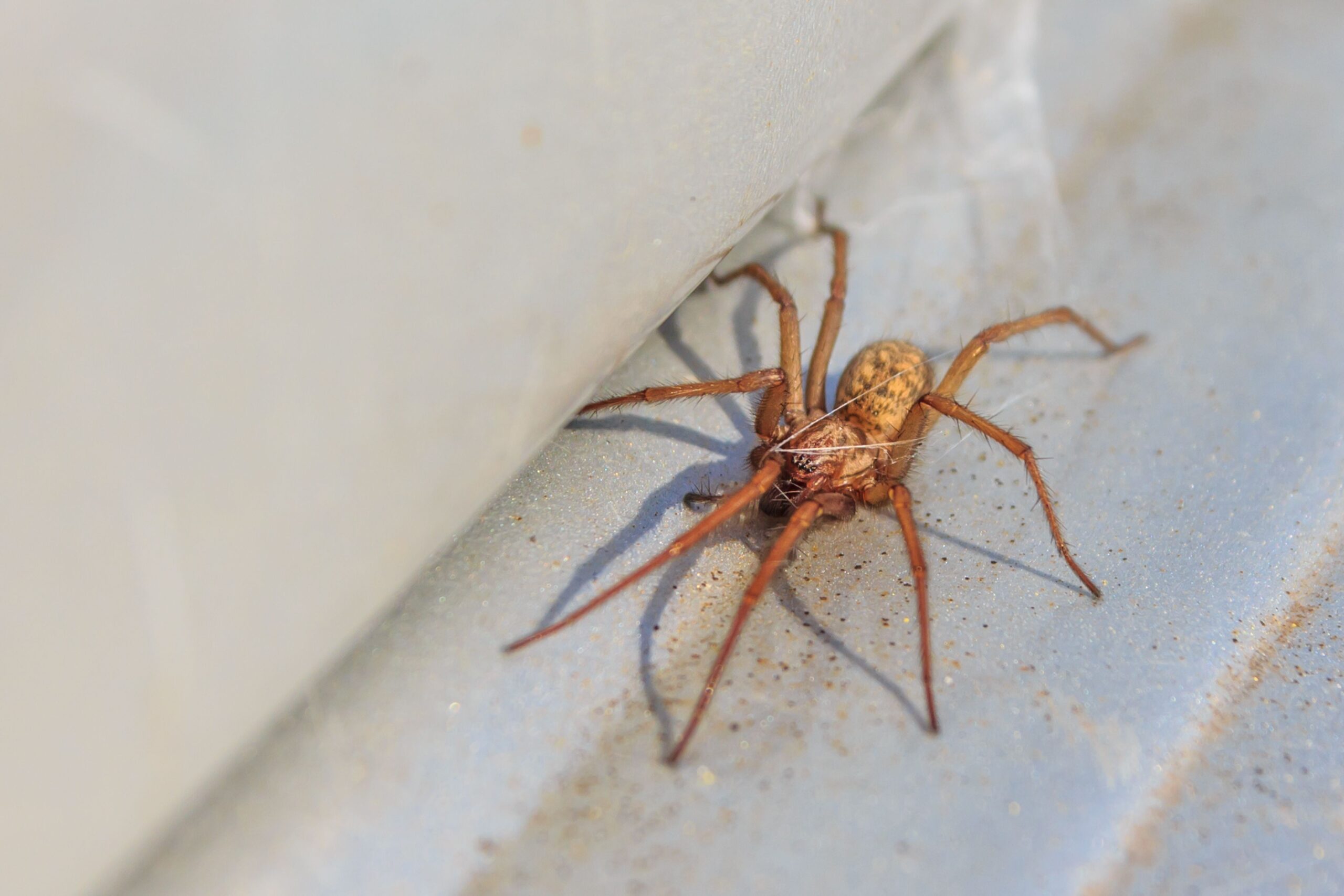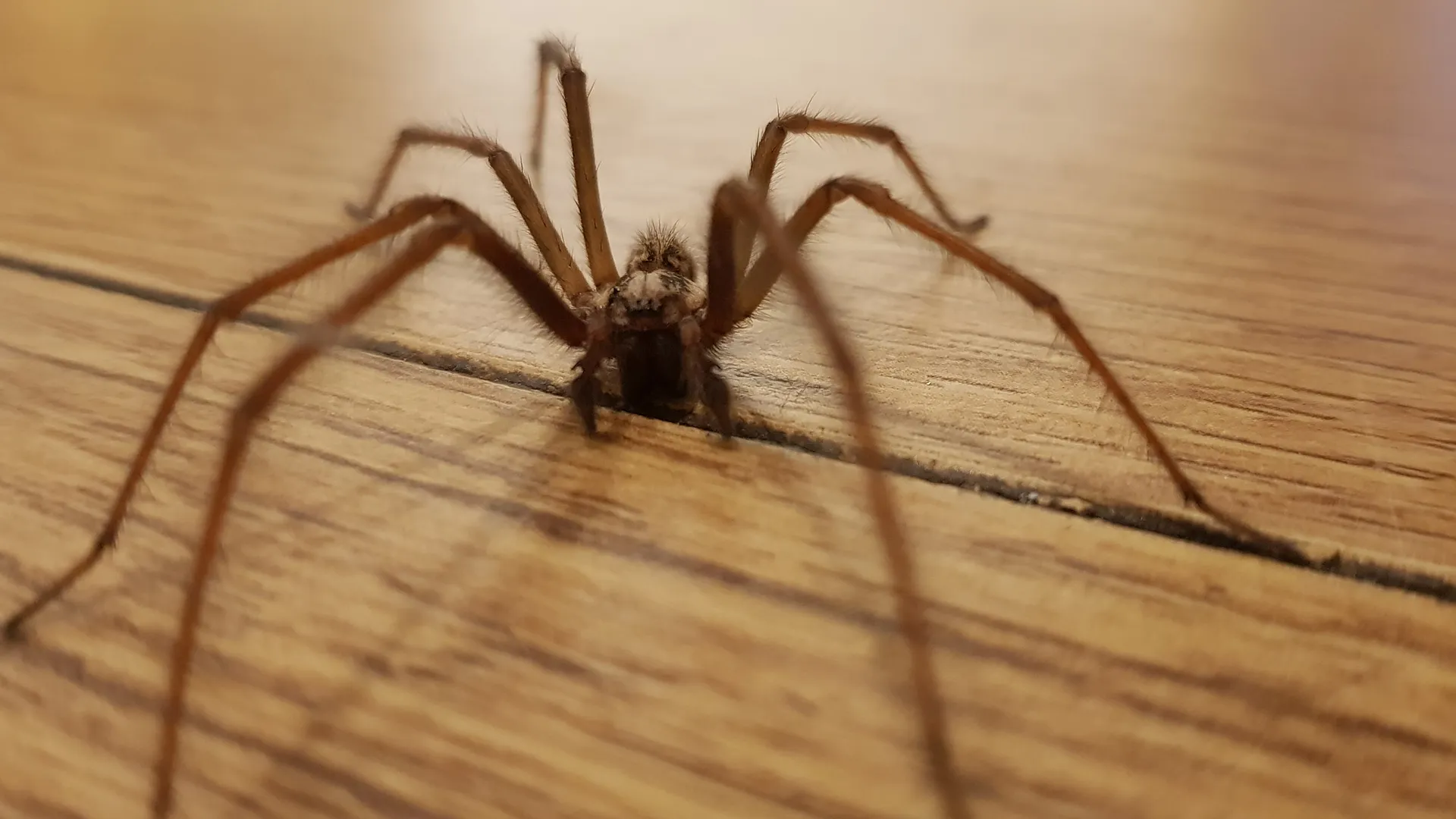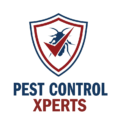Florida’s subtropical environment offers a wealth of natural beauty, with warm temperatures, high humidity, and a variety of lush habitats that appeal to locals and visitors alike. Unfortunately, these conditions also attract and sustain an array of pests—including spiders. While some spiders help maintain a balanced ecosystem by catching insects, too many spiders around or inside a home can become unsettling for occupants. In areas like Homestead, Florida, it is not unusual for homeowners and business operators to encounter multiple spider species—some harmless, some potentially dangerous.
This service page explores how spiders thrive in Florida’s climate, the common signs that a spider population has grown too large, and why working with a professional spider exterminator is often the most reliable way to regain control of your space. By understanding and addressing the root causes of spider issues—such as abundant prey insects or easy entry points—property owners in Homestead can more confidently maintain a comfortable, pest-free environment.
Why Spiders Flourish in Florida
Warm Temperatures Year-Round
Florida’s subtropical climate, especially in Homestead, seldom dips into prolonged cold spells. Many spider species remain active throughout the year, breeding without the natural slowdown that colder climates impose. For species that reproduce quickly, such as orb weavers or house spiders, the consistent warmth means eggs laid in corners, attics, or hidden gaps can hatch and mature with fewer seasonal hurdles.
High Humidity
Warm, humid air helps sustain the insect populations that spiders feed on. In Florida’s lush landscaping—ranging from thick shrubs to tropical fruit trees—the moisture content supports breeding cycles for mosquitoes, flies, and other potential spider prey. With abundant meals available, spider populations easily remain stable or even expand. In turn, higher insect numbers attract more spiders seeking reliable food sources.
Urban-Agricultural Interface
Homestead presents a mix of suburban developments, farmland, orchards, and other natural areas, creating overlapping habitats for many spider species. Whether you’re near a suburban garden or an agricultural field, spiders have multiple ecosystems to exploit, often moving between open fields and residential areas. This close proximity to diverse environments supports a wider variety of insects, naturally drawing various spider species to the area.
Natural Hiding Spots
Florida’s homes frequently include features like porches, lanais, crawl spaces, and attic ventilation, all of which can serve as prime shelter for spiders. Dense landscaping, palm trees, and thick vines near walls can create a network of hiding spots that allow spiders to remain undisturbed. Indoors, cluttered basements or storage areas provide additional webs and nesting opportunities.
Continuous Breeding Cycles
Because the climate remains relatively mild, spiders do not face extended dormancy or inactivity. This uninterrupted breeding season can lead to ballooning populations if no preventive measures are in place. A single female spider often lays dozens—sometimes hundreds—of eggs, and these hatchlings can rapidly mature, increasing the spider presence within a structure or around its perimeter.

Common Spiders in Homestead
Although Florida hosts a broad range of spider species, certain varieties appear more frequently around homes or businesses:
- House Spiders (Parasteatoda spp.)
- Commonly found in corners, garages, or basements, these house spiders build messy, tangled webs that can catch flying insects.
- While not especially dangerous, heavy accumulations of webs can become an annoyance or indicate a high insect presence indoors.
- Commonly found in corners, garages, or basements, these house spiders build messy, tangled webs that can catch flying insects.
- Wolf Spiders (Lycosidae family)
- Typically ground-dwelling hunters known for their agility. They roam at night searching for prey.
- Although wolf spiders can appear intimidating due to their size, they are generally not aggressive. Bites can cause discomfort but are rarely dangerous unless the person bitten has specific sensitivities.
- Typically ground-dwelling hunters known for their agility. They roam at night searching for prey.
- Orb Weavers (Araneidae family)
- Orb weavers create large, circular webs between structures, fences, or trees. Their webs can sometimes appear overnight in gardens or doorways.
- Their bites are usually harmless, but large webs can be startling if encountered unexpectedly.
- Orb weavers create large, circular webs between structures, fences, or trees. Their webs can sometimes appear overnight in gardens or doorways.
- Widow Spiders (Latrodectus spp.)
- More concerning species like the southern black widow can be found in undisturbed areas—like wood piles, sheds, or under eaves.
- Although they tend to be shy, bites from widow spiders can cause severe reactions or health complications. Professional intervention is advised when widows are found.
- More concerning species like the southern black widow can be found in undisturbed areas—like wood piles, sheds, or under eaves.
- Brown Recluses (Loxosceles reclusa)
- While some parts of Florida report brown recluse sightings, they are less common in the state compared to other regions.
- Bites can lead to localized tissue damage. Confirming the presence of brown recluses typically requires professional inspection.
- While some parts of Florida report brown recluse sightings, they are less common in the state compared to other regions.
- Jumping Spiders (Salticidae family)
- Small, curious spiders that have excellent vision and tend to jump between surfaces.
- They often hunt on windowsills or around light fixtures, searching for small insects. While mostly harmless, their sudden movements may surprise homeowners.
- Small, curious spiders that have excellent vision and tend to jump between surfaces.
Telltale Signs of a Spider Infestation
Excess Webs and Egg Sacs
One of the most noticeable signs is an abundance of webs in frequently used areas—such as corners near ceilings, doorways, or windows. Larger spider populations may lead to multiple nests or egg sacs in hidden corners, attics, or storage boxes. The presence of multiple spider egg sacs suggests ongoing reproduction, which can escalate if ignored.
Frequent Insect Sightings
Spiders thrive where insects are readily available. If a household observes large numbers of gnats, flies, or roaches, spiders may appear to feed on them. While a few extra webs can indicate natural predation, a sudden spike in spider sightings might point to an underlying insect infestation or poor exclusion practices.
Live Spiders Indoors
Spotting spiders indoors regularly—beyond an occasional stray—can signify that they are finding consistent entry points and suitable nesting sites. For example, if you see multiple spiders each day on walls, in sink basins, or under furniture, it is wise to investigate for hidden webs or cracks in the foundation.
Dusty, Undisturbed Corners
Spiders often favor quiet, untouched areas, such as behind large furniture, in storage areas, or inside seldom-used closets. If you notice layers of webbing or clusters of dead insects in these places, it could signal that spiders have been active for quite some time.
Resident Complaints
In commercial buildings or multi-family properties, residents or tenants may report spider sightings if they are worried about potential bites. Multiple reports from different units or areas could mean a widespread spider presence demanding swift, coordinated intervention.
Risks of Ignoring Spider Populations
Bites and Health Concerns
Although many Florida spiders pose minimal risk, certain species—like widow spiders—can deliver bites that require medical attention. Ignoring repeated sightings of potentially venomous species raises the likelihood of a harmful encounter, especially for children, pets, or individuals with specific allergies.
Negative Impressions
A property overrun with spider webs and egg sacs can seem neglected or unsanitary. For businesses, this can translate into negative customer experiences, discouraging repeat visits or tarnishing an otherwise solid reputation. Homeowners may feel uneasy inviting guests into a home that appears teeming with spiders.
Overlapping Pest Issues
Spiders typically exist in places where insect populations are prevalent. Failing to address the underlying insect issues can result in a persistent cycle: insects flourish, spiders grow in number, and property owners struggle to cut off either side of the infestation. By tackling only the spider problem, one could still face the root cause—an excessive insect population—leading to repeated spider appearances.
Escalating Complexity
A few harmless spiders can become a bigger concern if people inadvertently disturb hidden nests of more dangerous species. Delaying proper treatments often means multiple generations of spiders get established in attics, basements, or on exteriors. In the long run, larger-scale interventions—and higher costs—may be necessary.

Why a Professional Spider Exterminator Is Crucial
Accurate Identification
Determining the species is essential for an effective response. A trained spider exterminator recognizes the difference between harmless house spiders and more concerning widows or recluse species. Correct identification shapes the control methods employed, ensuring that toxic treatments are directed responsibly and only when needed.
Comprehensive Solutions
Professional exterminators take a holistic approach. Beyond simply spraying webs, they locate breeding areas, remove egg sacs, and reduce insect populations that serve as the primary food source. Addressing these components together yields a more permanent reduction in spider activity.
Safe Product Usage
Spiders often hide in corners, behind furniture, or within wall voids—areas that homeowners or employees commonly use or access. Exterminators know where and how to apply targeted products, minimizing occupant exposure while effectively reaching spider harborage sites. By using regulated treatments responsibly, they help keep families and pets safe.
Prevention and Exclusion
To stop recurring spider invasions, professionals focus on exclusion steps: sealing gaps around windows, repairing torn screens, and reducing clutter in storage spaces. They also may recommend improvements in outdoor lighting or yard maintenance to minimize insect attractants. Such steps go beyond immediate spider elimination, helping to prevent new arrivals from taking hold.
Time-Saving and Thoroughness
Without professional insights, homeowners might try multiple do-it-yourself solutions that only partially reduce spider populations. Repeated attempts can be time-consuming, especially if the underlying pest or structural issues remain unresolved. A spider exterminator streamlines the process, ensuring that the infestation is tackled at its root the first time.
Long-Term Monitoring
Reputable pest control providers usually offer follow-up visits or ongoing service plans to ensure spiders and other insects do not reclaim the property. With periodic inspections, they can detect early signs of a renewed spider presence—adjusting treatments before the situation escalates. Consistency is key in Florida’s climate, where pest cycles continue year-round.
Typical Methods for Spider Treatments
Inspection and Mapping
A professional conducts a thorough walkthrough, examining both indoor and outdoor areas. This includes identifying where spiders nest, checking for insect abundance, and noting specific species if possible. By confirming the range and severity of the infestation, the exterminator devises a targeted plan that addresses high-priority hotspots first.
Web and Egg Sac Removal
Physically removing webs and egg sacs is a straightforward but critical step. This process immediately reduces the number of future hatchlings. It also disrupts established spiders by eliminating their feeding sites. Vacuums, brushes, and protective gear help ensure the removal is both efficient and safe.
Insect Reduction
Because spiders typically appear where insects abound, tackling the broader insect issue is vital. Treatments that target common pests—like ants, roaches, or flies—can deprive spiders of their food source. Professionals may use a combination of residual insecticides, baits, and growth regulators to lower insect presence in and around the home.
Targeted Chemical Applications
When necessary—particularly if venomous spiders are confirmed—exterminators might apply insecticide sprays or dusts in cracks, corners, or other concealed harborage areas. Such treatments remain localized to areas where contact with occupants is minimal. By using precise application methods, they reduce the risk of overusing chemicals while effectively targeting problem spots.
Exclusion Measures
Closing up gaps, sealing window and door frames, and repairing screens can drastically cut down on spider entry points. Professionals may also inspect roof eaves or attic vents, where some spiders (like roof dwellers) or insects can enter. Trimming thick foliage or removing debris piles near the building foundation further discourages spiders from lingering.
Follow-Up Evaluations
Recurring visits help confirm whether treatments are succeeding. In many cases, an exterminator might return after a few weeks to remove any new webs, recheck for insects, and confirm that preventative measures are holding. If additional spiders or signs of other pests are discovered, the exterminator can adapt the treatment plan accordingly.

Service Areas: Homestead and Surrounding Communities
Homestead: Nestled in Miami-Dade County, Homestead connects urban living with agricultural landscapes. Residents here often enjoy easy access to nature, which also means spiders can readily migrate between cultivated fields, natural preserves, and suburban yards. Regular pest control practices become essential in preventing unwanted spider colonization.
If you maintain other properties nearby—whether in rural enclaves or more urban settings around South Florida—the same challenges apply. Spiders capitalize on Florida’s warmth and humidity whenever they find an unguarded entryway or bountiful insect populations. A consistent, area-wide approach ensures no single property becomes a refuge for spiders, safeguarding a community’s comfort.
Why Our Spider Treatments Excel
Florida-Specific Expertise
Our team understands that Homestead’s subtropical climate fuels year-round pest cycles. Spider control is not just about reacting to current populations—proactive inspection and prevention are key. We tailor our strategies to Florida’s unique weather patterns, ensuring each step addresses potential humidity and moisture-related issues.
Comprehensive Pest Management
Rather than viewing spiders in isolation, we integrate our approach with comprehensive pest management. By treating for insects that attract spiders, sealing common entry points, and removing established spider nests, we deliver a well-rounded solution that curtails the underlying forces driving spider infestations.
Precision and Care
We recognize that many spiders—while startling—are beneficial for controlling insect pests. Our emphasis is on reducing or removing populations that pose a direct risk to humans or have become an overwhelming nuisance. By targeting problem species or high-density areas, we leave plenty of room for beneficial predators to coexist in controlled numbers outside living spaces.
Ongoing Support and Prevention
Spiders can reappear as weather patterns shift or as new eggs hatch. We offer follow-up services to verify that treatments remain effective and that new colonies do not establish themselves. Our dedication goes beyond a single visit—ensuring that Homestead property owners receive consistent support in maintaining a spider-free environment.
Localized Knowledge
Homestead’s natural environment, including its agricultural zones and frequent rainfall, distinguishes it from other parts of Florida. We apply localized knowledge to anticipate the times of year when spider populations may spike, helping you stay ahead of potential infestations.
Next Steps
If you’re noticing spider webs around doorways, spotting large orb weavers near windows, or worrying about venomous spiders nesting in dark corners, it might be time to consider professional assistance. Contact us to learn more or schedule your service. Our spider exterminator methods for Homestead, Florida, involve safe, practical treatments designed to reduce spider numbers while also targeting the insects that draw them in.
Avoid the stress of unexpected spider encounters in high-traffic areas or the concern that potentially venomous species might pose a threat to loved ones. By combining consistent cleaning, responsible yard maintenance, and strategic pest control measures, you can transform your property into an inhospitable place for unwanted arachnids. Florida’s climate may support spiders year-round, but with vigilance and professional guidance, you can limit their impact and ensure a comfortable, pest-free space for everyone.
Maintaining a Spider-Free Environment
- Regular Cleaning
- Dust and vacuum corners, baseboards, and behind furniture to remove spider webs and egg sacs.
- Keep areas near windowsills and door frames clean, minimizing the points where spiders build webs.
- Dust and vacuum corners, baseboards, and behind furniture to remove spider webs and egg sacs.
- Declutter Storage Spaces
- Basements, attics, and garages often harbor boxes or old belongings that spiders find ideal for nesting.
- Store seasonal items in sealed plastic bins rather than cardboard boxes, reducing places for spiders to hide.
- Basements, attics, and garages often harbor boxes or old belongings that spiders find ideal for nesting.
- Manage Outdoor Lighting
- Bright lights attract flying insects, which in turn attract spiders looking for an easy meal.
- Switching to yellow or sodium vapor lights can cut down on insect activity, thereby decreasing spider presence near doorways or patios.
- Bright lights attract flying insects, which in turn attract spiders looking for an easy meal.
- Seal Entry Points
- Repair window screens, add weather stripping to doors, and check for gaps around plumbing or ventilation.
- Spiders (and the insects they feed on) often enter through small cracks, so a thorough inspection can significantly reduce infestations.
- Repair window screens, add weather stripping to doors, and check for gaps around plumbing or ventilation.
- Trim Vegetation
- Keep shrubs, vines, or tree branches away from windows, eaves, and rooflines. Dense foliage next to walls can provide a bridge for spiders to move indoors.
- Regularly remove piles of leaves or mulch that harbor insects, limiting the appeal for spiders seeking hunting grounds.
- Keep shrubs, vines, or tree branches away from windows, eaves, and rooflines. Dense foliage next to walls can provide a bridge for spiders to move indoors.
- Address Underlying Insect Issues
- If you suspect a surge in flies, mosquitoes, or other pests, tackle that first.
- Installing screens on vents, ensuring proper drainage, and scheduling general pest control services keep overall insect activity in check.
- If you suspect a surge in flies, mosquitoes, or other pests, tackle that first.
- Stay Proactive with Professional Guidance
- Scheduling routine inspections or treatments can help detect early spider populations.
- A spider exterminator can offer nuanced insights on seasonal shifts or newly emerging pest threats in Homestead.
- Scheduling routine inspections or treatments can help detect early spider populations.
By taking these steps and collaborating with pest control professionals, Florida residents in Homestead can successfully balance their desire to enjoy the region’s natural beauty with the need to keep spider populations at safe, manageable levels. Frequent upkeep, mindful landscaping, and targeted treatments form a powerful combination for deterring spiders year-round. Even with Florida’s inviting climate, it is possible to remain one step ahead—ensuring you and your family feel secure within your living or working environment.
